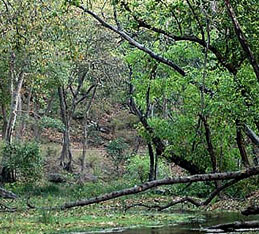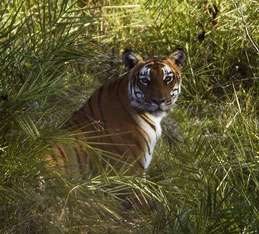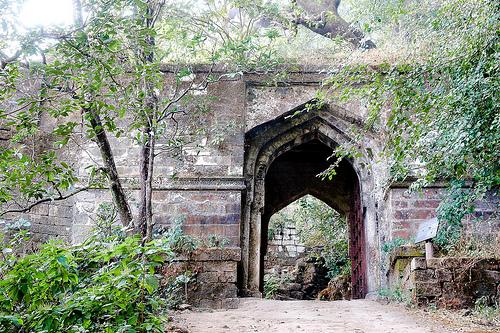Best of India Tours
- Golden Triangle Tour- Best of India & Nepal
- Classical Rajasthan
India Cultural Tours
- Images of North India- Karnataka Heritage
- Rajasthan & Goa Tour
Discover India Tours
- Grand India Tour- North to South India
- Central to South India
Rajasthan Tours
- Classical Rajasthan Tour- Golden Triangle Tour
- Grand Mughal Tour
India Luxury Trains
- Palace on Wheels- The Golden Chariot
- India Deccan Odyssey
- The Indian Maharaja
- Royal Rajasthan on Wheels
Nepal Tours
- Glimpses of Nepal- Buddhist Pilgrimage
- Nepal River Rafting
- Destinations of Nepal
- Nepal General Info
India Wildlife Tours
- North India Wild Life- South India Wildlife
Tibet Tours
- Tibet Monastery Tours- Explore Tibet
- Destinations of Tibet
Spa & Yoga Tours
- Ananda in Himalayas- Yoga & Meditation
Adventure Tours
- Manali Safari Tour- Himalayan Trekking
- Horse Safari
Bandhavgarh
Bandhavgarh
![]() Bhopal
Bhopal
![]() Gwalior
Gwalior
![]() Indore
Indore
![]() Jabalpur
Jabalpur
![]() Kanha
Kanha
![]() Khajuraho
Khajuraho
![]() Mandu
Mandu
![]() Orchha
Orchha

If Kanha is Kipling's country, then Bandhavgarh is the jewel in Madhya Pradesh's crown. Situated at a distance of 195 km from Jabalpur and 225 km from Khajuraho, the Bandhavgarh National Park is a premier wildlife preserve in the Vindhya mountain range of Central India. It is a tiny park compared to Kanha but with nearly the same number of tigers and leopards, or at least that is the official figure. Besides tigers and leopards, Bandhavgarh is also extremely productive for medium-sized bison herds.
Bandhavgarh came into existence as a national park in 1968 with a core Bandhavgarh area of 105 sq. km, which was later extended to include two adjoining sal forests in 1986. Before becoming a national park, it was the game reserve of the Maharajas of Rewa. But due to loss of royal patronage, it remained neglected for a long time until the government declared it a national park to control rampant poaching in the area.
Sightseeing
Bandhavgarh has the highest density of tigers among all reserves in India and packs the same wealth of wildlife in a smaller area. It is famous as the original home of the white (albino) tiger, though this rare species has long become extinct here. Apart from tigers, Bandhavgarh is also famous for sloth bear, sambar, chital, muntjac, nilgai, chinkara, and wild pigs. There are also interesting cave shrines scattered around the park, with Brahmi inscriptions dating from the first century B.C. You can visit the remains of the Bandhavgarh fort believed to be 2,000 years old.
Excursions for Bandhavgarh
Flora
The flora of Bandhavgarh is the typical moist, deciduous forest, so common to Central India. Most of the park area is covered with rich sal (Shorea robusta) forests, although at high altitude you may also come across mixed forests comprising of sali, saj, saja, etc. Large stretches of bamboo and grassland are also distributed here.

Fauna

The park boasts of a wide variety of game. Its main wild beasts are tiger (Panthera tigris), leopard (P. pardus), sloth bear (Melursus ursinus), gaur (Bos gaurus), sambar (Cervus unicolor), chital (Axis axis), muntjac (Muntiacus muntjak), nilgai (Boselaphus tragocamelus), chinkara (Gazella gazella; mountain gazelle), and wild boar (Sus scrofa). The gaur is spotted mainly in March/April, while the sambar and muntjac are found in thick vegetation area. The 1990 census accounted for 59 tigers, over 4,500 sambars, and over 7,000 spotted deer. The tigers, however, remain very Fauna elusive. The flowering and fruit trees attract woodland birds, which include green pigeon, crested serpent eagle, and variable hawk eagle. One may also encounter rhesus macaque, hyenas, porcupine, white-browed fantails, Steppe eagle, green pigeons, Malabar hornbills, blossom-headed parakeets, blue-bearded bee-eater, white-bellied grongo, and Jerdon's leaf birds.
Bandhavgarh Fort
The Bandhavgarh Fort, located within the park, was built by the Maharajas of Rewa. Set at an altitude of 800 m above the surrounding countryside, the fort offers a panoramic view of the wildlife preserve. A stream called Charganga flows beside the fort. While making a trip to the fort, one can also see statues and temples and a 10th-century rock statue of Lord Vishnu. The vicinity of the fort is known for its population of Crag martins and blackbucks

Fact File
 Area: 450 sq. km (Core area: 105 sq. km)
Area: 450 sq. km (Core area: 105 sq. km)
 Rainfall: 1,500 mm
Rainfall: 1,500 mm
 Altitude: 800 m above sea level
Altitude: 800 m above sea level
 Best Time to Visit:February-June (Closed 1 July-31 October)
Best Time to Visit:February-June (Closed 1 July-31 October)
 Temperature range:42 C to 2 C
Temperature range:42 C to 2 C
 STD Code: 07627
STD Code: 07627




